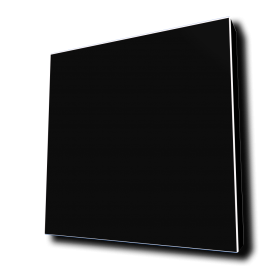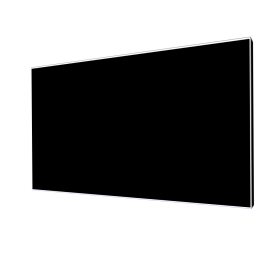
Acoustic foam is a popular material used for sound absorption in a variety of settings, from home studios to commercial spaces. However, while it can be effective in reducing echo and improving acoustics to some extent, it is not a substitute for professional acoustic treatment.
One of the main reasons for the ineffectiveness of acoustic foam is its limited frequency absorption range. Most acoustic foam is designed to absorb mid and high frequencies, but it does little to address low frequencies. This means that even with acoustic foam installed, a room may still have an uneven frequency response and poor sound quality.
Another limitation of acoustic foam is its thickness. Most foam panels are relatively thin, typically between 1-2 inches. While thicker foam panels are available, they can be expensive and may not be as effective as other materials, such as mineral wool or fiberglass, which have a higher density and greater absorption capability.
In addition, acoustic foam is often not installed properly, which can further reduce its effectiveness. For example, foam panels are frequently placed in a haphazard manner on walls or ceilings, rather than strategically placed to address specific acoustic issues. This can result in an uneven distribution of sound absorption and may even create new acoustic problems.
Professional acoustic treatment, on the other hand, is designed to address the unique acoustic needs of a space. Acoustic professionals use a range of materials and techniques, such as diffusers, absorbers, and bass traps, to create an even frequency response and improve sound quality. They take into account the room’s dimensions, shape, and use, as well as the materials used in its construction, to create a customized acoustic treatment plan.
Another advantage of professional acoustic treatment is that it is often more cost-effective in the long run. While acoustic foam may be cheaper upfront, it may need to be replaced or supplemented over time as the acoustic needs of the space change. Professional acoustic treatment, on the other hand, is a long-term investment that can improve the sound quality of a space for years to come.
In conclusion, while acoustic foam can be a useful tool for sound absorption in certain settings, it is not a substitute for professional acoustic treatment. Its limited frequency absorption range, thickness, and improper installation can all reduce its effectiveness. Professional acoustic treatment, on the other hand, provides a customized solution that can address the unique acoustic needs of a space and create a more even frequency response and better sound quality.
If you’re ready to get your space under control and want a slick look to boot, check out our huge selection of acoustic art panels with WIFI controllable RGB LED front and back lighting!

 PSY Acoustics Pro Line
PSY Acoustics Pro Line Portrait Panels (2′ x 4′)
Portrait Panels (2′ x 4′) Landscape Panels (2′ x 4′)
Landscape Panels (2′ x 4′) Square Panels (2′ x 2′ / 3′ x 3′ / 4′ x 4′)
Square Panels (2′ x 2′ / 3′ x 3′ / 4′ x 4′) Cascade Portrait Panels (6′ x 4′)
Cascade Portrait Panels (6′ x 4′) Ceiling Clouds (72″ x 40″ x 4″)
Ceiling Clouds (72″ x 40″ x 4″) Custom Panels
Custom Panels Prints (2′ x 4′) – Fabric Only
Prints (2′ x 4′) – Fabric Only Au5
Au5 Ilio
Ilio Jordan Rudess
Jordan Rudess Justin Vibes
Justin Vibes Kali Audio
Kali Audio Karra
Karra Libra Rising Music
Libra Rising Music MIDIhead
MIDIhead Neon Vines
Neon Vines School Of Rock
School Of Rock Tritonal
Tritonal 2k Games
2k Games Andy Lunique
Andy Lunique Bungie
Bungie Burke Black
Burke Black Delrith
Delrith Epic Games
Epic Games FG Tee V
FG Tee V Fightin’ Cowboy
Fightin’ Cowboy Gearbox Software
Gearbox Software Imperial Hal
Imperial Hal Oddworld Inhabitants
Oddworld Inhabitants Probably Monsters
Probably Monsters Striking Distance Studios
Striking Distance Studios Benn Jordan
Benn Jordan Chef PK
Chef PK Full Court Pumps
Full Court Pumps Priyon Joni
Priyon Joni Red Means Recording
Red Means Recording Reid Stefan
Reid Stefan Stacey Roy
Stacey Roy Venus Theory
Venus Theory